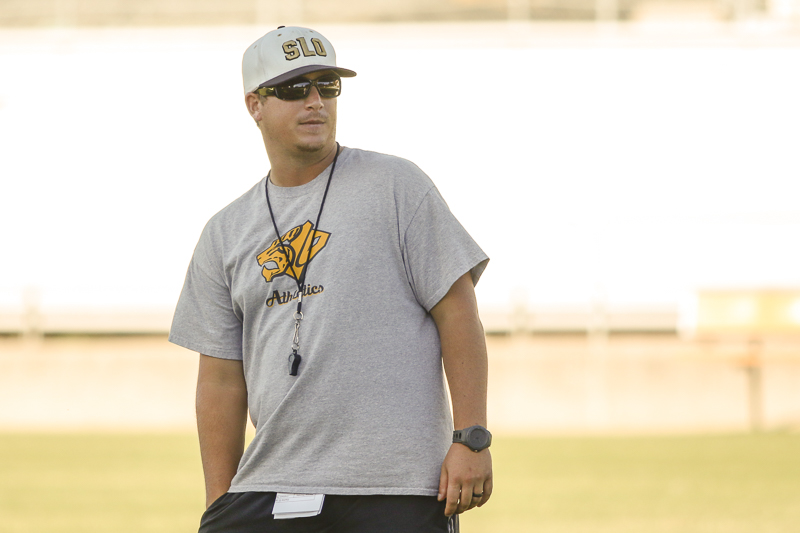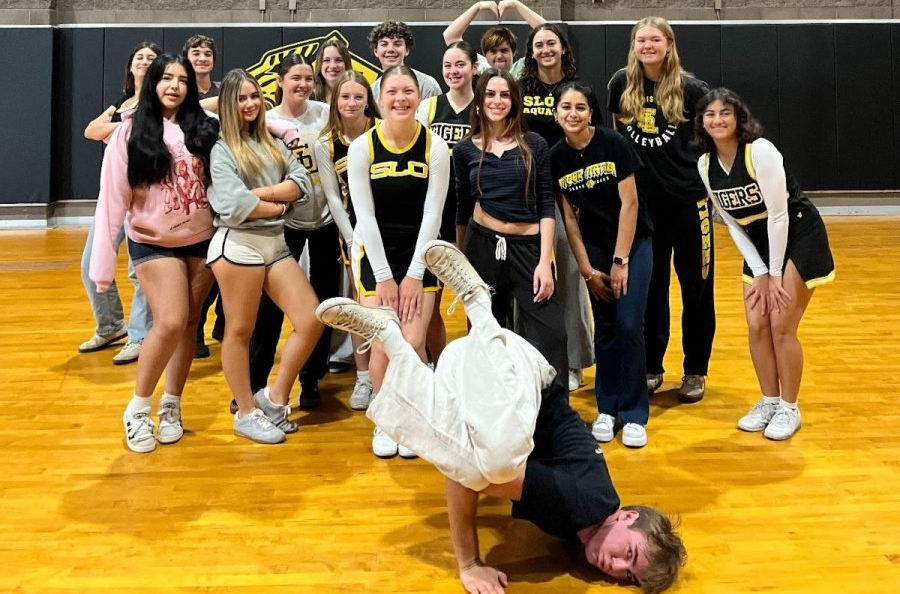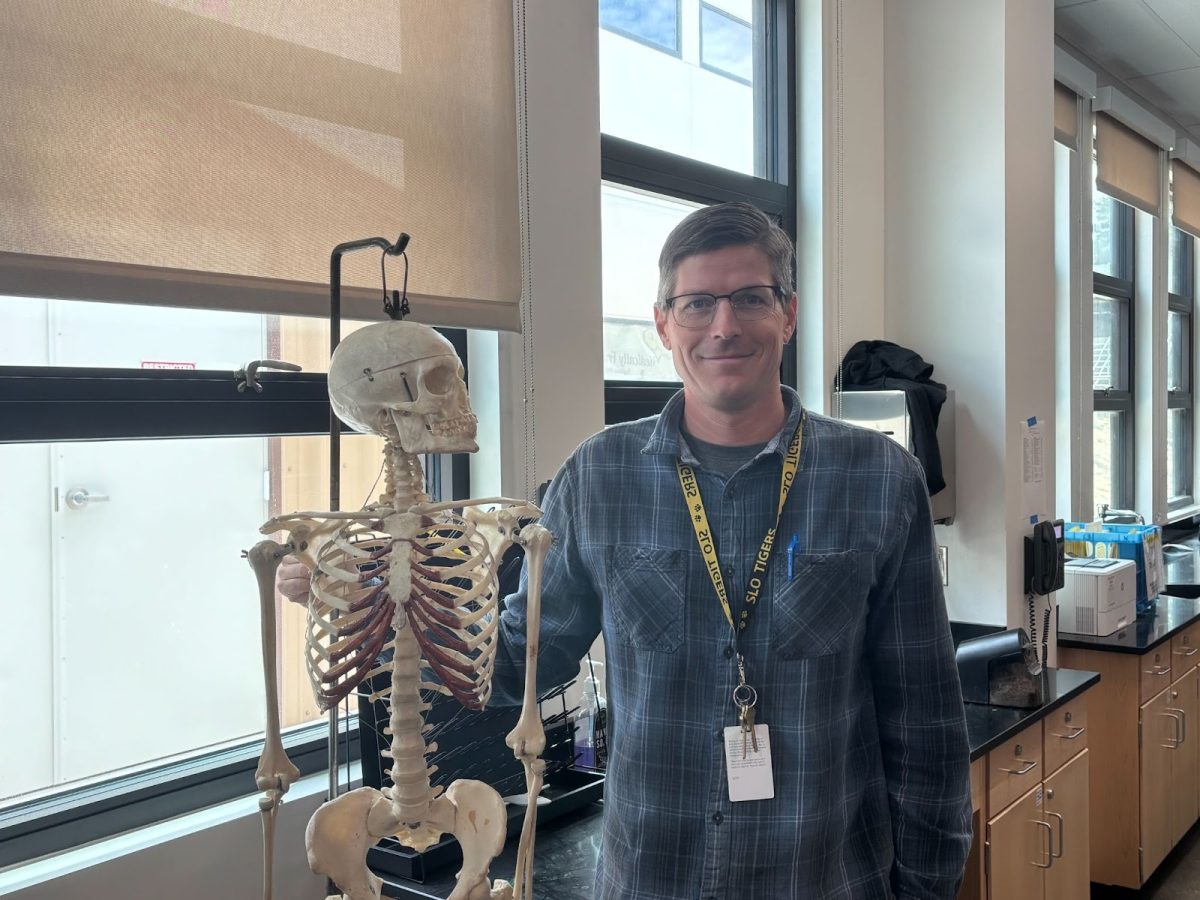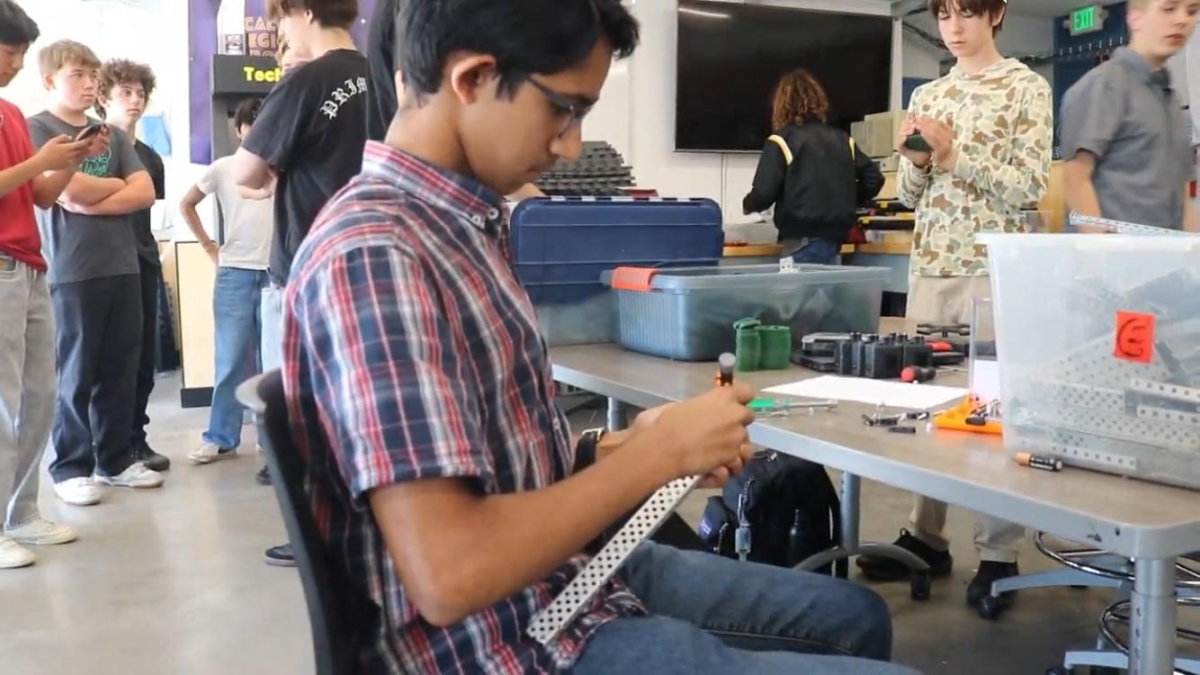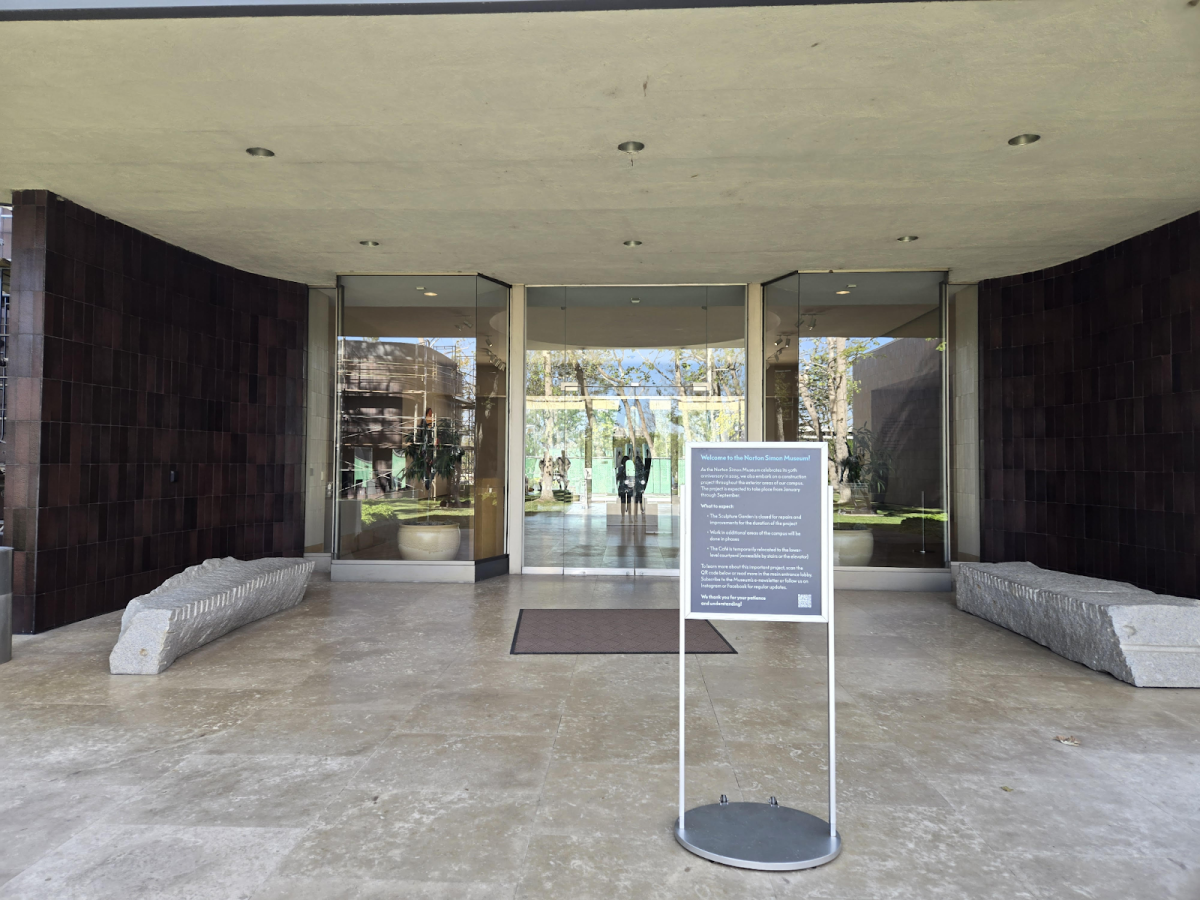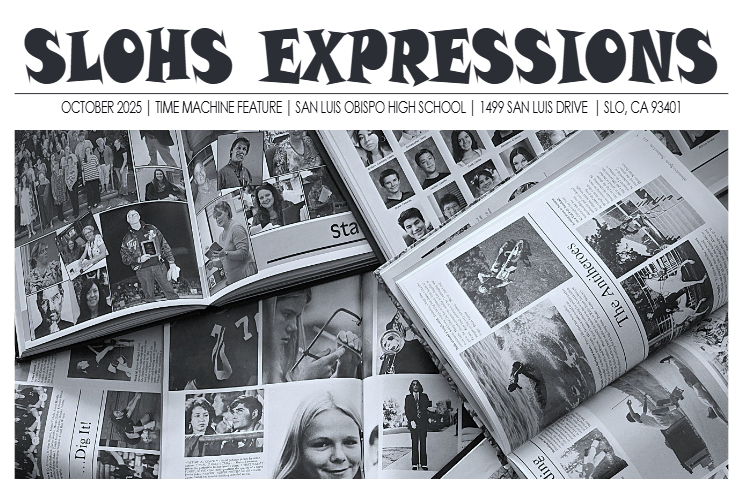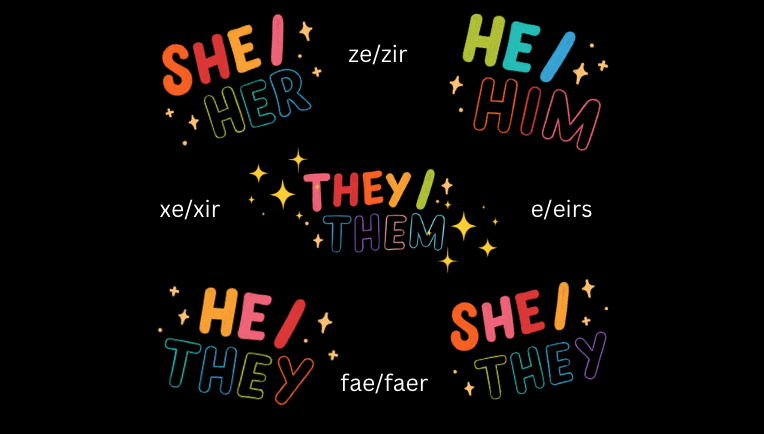There are a wide range of pronouns that one may use, and these are just a few. Graphic courtesy of Health & Sports Co-Editor Vyolet Burrus.
Despite San Luis Obispo High School being a rather accepting school, certain identities aren’t always accounted for.
While SLOHS has made strides in accommodating all genders and sexualities in the recent years, from implementing gender neutral bathrooms and locker rooms to asking student’s pronouns and preferred names at the beginning of the year, SLOHS is still lacking when it comes to acknowledging the validity of all genders and identities.
“Our world keeps changing, so we keep working to make sure that our curriculum is really representative of the diversity of our community and country and world. The trainings that we’re doing [are] making sure that we’re staying current so that we can always stay respectful, present, caring, perfect, [etc],” said SLOHS principal Rollin Dickinson.
Most students at SLOHS identify as cisgender (cis), meaning that they identify as their assigned sex at birth, but not all students identify this way.
Students who identify as transgender (trans) identify differently from their assigned sex at birth. People who are trans can fall into binary or non-binary identities; those identifying in the binary are trans men or trans women, whereas those under the non-binary umbrella identify outside the gender binary.
The gender binary, simply stated, is the classification of two genders: male and female. Non-binary, on the other hand, is anyone who identifies outside of the gender binary.
“[I’m genderfluid so] I feel like a different gender depending on the day, and my pronouns change. For some genderfluid people, they don’t change their pronouns, but for me, I don’t feel comfortable using a certain set of pronouns every day because sometimes they just feel wrong,” said freshman Charly Elston.
Whether someone’s pronouns are known or not, they should always be respected as they are an important part of one’s identity. Outward appearances don’t always display someone’s gender and pronouns, which is why it’s important to ask people’s pronouns when meeting them, similarly to asking a new person’s name. For people who change pronouns frequently, it can be difficult to use the correct pronouns all the time, but by simply asking, this problem can be alleviated.
While ‘he/him’ and ‘she/her’ are more commonly used, students also use ‘they/them’ pronouns at SLOHS. People use ‘they/them’ pronouns for various reasons, but using these pronouns allows one to feel comfortable in their identity without using gendered language.
There are also students who use neopronouns, sets of pronouns aside from ‘she/her’, ‘he/him’, and ‘they/them’. ‘Xe/xir’ and ‘e/em’ are examples of neopronouns, and while difficult to adjust to, they’re no different than other pronouns and allow more freedom for trans people to express themselves in a way that feels right to them.
Pronouns aren’t a hassle, nor a taboo subject, and they shouldn’t be treated as such. Wanting to be referred to correctly isn’t wrong, and people’s pronouns should be respected regardless of how they identify.
“It just feels kind of icky [when someone misgenders you], something just feels wrong; like you’re in the wrong skin and you’re trying to [crawl] out of your body,” said Elston.
Purposely misgendering someone is harassment, similar to calling someone the wrong name. Being misgendered can damage someone’s whole perspective towards how their identity is perceived by themselves and others, even changing the way they look at themselves, which is why it’s important to be respectful.
“Students don’t always make the best choices; they don’t always say the most appropriate things. So it’s [a matter of] how do we make sure that all of our students are acting in a way that is as respectful as possible and as inclusive as possible?” said Dickinson.
Administrators have recently started LGBTQ+ training to be more aware of current terminology and queer rights, and the training has allowed SLOHS to take steps in the right direction to a more inclusive and respectful campus, but in order for the campus to be truly inclusive, students need to be respectful of all.
Gender is a spectrum, unique to each individual, and it plays an important part in someone’s identity, especially when they don’t identify as cis. Respect all identities, and be aware that everyone’s identity is valid, regardless of their label.
Sources: mypronouns.org, rollingstone.com











